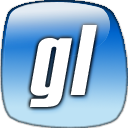This section contains links to external sites that you might find interesting
or helpful in understanding the course material (in addition to the materials
on this web site and that found in the reference texts for this unit). If
you find other sites that you think might be useful and relevant to the
course please email the url to the lecturer.
Here are a list of reference books read and recommended by the lecturer,
in addition to the standard texts for this course. These books are all available
from the library.
McReynolds, T. and D. Blythe (2005) Advanced graphics programming
using openGL. San Francisco, CA, Elsevier Morgan Kaufmann Publishers.
[a comprehensive coverage of both basic and
advanced features of OpenGL. Excellent reference book and a must-have
for the serious OpenGL programmer]
Verth, J. M. v. and L. M. Bishop (2004) Essential mathematics for
games and interactive applications: a programmers guide. Amsterdam;
Boston, Morgan Kaufmann Publishers.
[great coverage of the maths necessary for practical
computer graphics – highly recommended]
Eberly, D. H. (2005) 3D game engine architecture: engineering real-time
applications with Wild Magic. San Francisco, Calif., Morgan Kaufmann.
[good reading for anyone interested in how OO design
works with 3D graphics – download the source code from the author's website]
OpenGL ARB (2004) OpenGL Reference Manual (4th ed.) The Official Reference
Document to OpenGL, Version 1.4, Boston, Mass., Addison-Wesley
[The "Blue Book". OpenGL is currently at Version
2.0, but this is the current set of documentation in print form.
Covers every OpenGL function call. Essential reference for the serious
graphics professional]
OpenGL ARB (2007) OpenGL Programming Guide (5th ed.) The Official
Guide to Learning OpenGL Version 2.0, Boston Mass., Addison-Wesley
[The "Red Book". We're still waiting for the
reference manual, but the OpenGL 2.0 programming guide is the most
comprehensive guide on how to use OpenGL. Note version
1.0 of this book is available on-line]
Rost, R. J. (2007) OpenGL Shading Language (2nd ed.), Boston,
Mass., Addison-Wesley
[The "Orange Book". Official programming
guide to to the OpenGL shading language which will be fully integrated
to OpenGL 2.0]
The lectures for this course (at Clayton campus) are recorded and are
available via the Monash
lectures on-line web site. You'll need to supply your authcate username
and password to access the lectures.
Please note that the lectures include a lot of visual material and explanation
so you should not rely on using the audio recording as a substitute for
attending the lectures.
 Glitch is an OpenGL program designed to assist you in learning and experimenting
with OpenGL (the graphics API used in this course). Glitch allows you to
interactively change and assemble OpenGL code fragments in real-time, and
see "under the hood", showing you internal OpenGL state. A number
of glitch tutorial files have been developed in relation to topics covered
in this
course.
Glitch is an OpenGL program designed to assist you in learning and experimenting
with OpenGL (the graphics API used in this course). Glitch allows you to
interactively change and assemble OpenGL code fragments in real-time, and
see "under the hood", showing you internal OpenGL state. A number
of glitch tutorial files have been developed in relation to topics covered
in this
course.